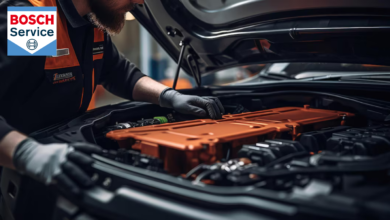How to maintain your car with proper cleaning

Without a regular checkup, a radiator can fail, leading to high maintenance repairs. Understanding when to service your car radiator repairs and knowing which safety elements to check can prolong its lifespan and improve performance.
When Does a Car Radiator Need Service?
- Routine Maintenance
Radiators require regular maintenance to prevent buildup, corrosion, and blockages. It’s generally recommended to inspect the radiator during every oil change or at least every six months. - Signs of Overheating
If your engine temperature gauge frequently rises or the engine overheats, it’s a clear sign that the radiator may need service. Overheating often results from poor coolant circulation due to low levels, a damaged radiator fan, or clogged cooling fins. - Coolant Leaks
If you notice coloured fluid (green, orange, or yellow) under your car, it could be leaking coolant. Leaks can originate from a cracked radiator, faulty hoses, or damaged seals. If left untreated, leaks can cause severe overheating. - Corrosion and Rust
Over time, radiators can develop rust, particularly if the coolant isn’t replaced regularly. If you see discoloured or rusty coolant, it’s an indicator that rust has contaminated the system, which requires immediate service. - Low Coolant Levels
Constantly needing to refill your coolant indicates a leak or internal issue with the radiator.
Safety Elements to Check in Radiator Maintenance
Coolant Levels
The coolant level should always be checked when travelling long distances. When it is recommended to fill the coolant, it is suggested to make sure it is maximised or medium.
Radiator Cap
The radiator cap helps maintain proper pressure within the cooling system. The engine may overheat if the coolant boils because of an imbalance in pressure caused by a broken cap. Inspect the cap for wear and tear, and replace it if it shows signs of damage or corrosion.
Radiator Fins and Cooling Fan
Over time, these fins can become clogged with debris or bent, reducing the radiator’s efficiency. Gently clean the fins with a soft brush or compressed air to improve airflow. Additionally, check that the cooling fan is operational, especially if the car tends to overheat at low speeds or while idling. The fan helps cool the radiator when the car isn’t moving fast enough for airflow.
Thermostat Functionality
The thermostat regulates coolant flow. Testing and replacing a defective part can ensure coolant flow when the engine heats up.
Coolant Quality
Good-quality coolant is crucial for a radiator’s performance. If your coolant looks dirty, murky, or rusty, it’s time to flush the system and refill it with fresh coolant.
When to Consult a Professional
While basic checks like coolant levels and cap inspection can be done by most car owners, some issues require professional expertise.
Conclusion
Regular inspections of coolant levels, hoses, radiator fins, and the cap can help identify potential problems before they escalate. If the engine starts heating, check the radiator or notice coolant leaks; don’t delay in getting service. A timely inspection or service can prevent costly repairs, extend the life of your vehicle, and ensure optimal performance on the road. Additionally, always use the right type of coolant recommended by your vehicle manufacturer for the best results.



